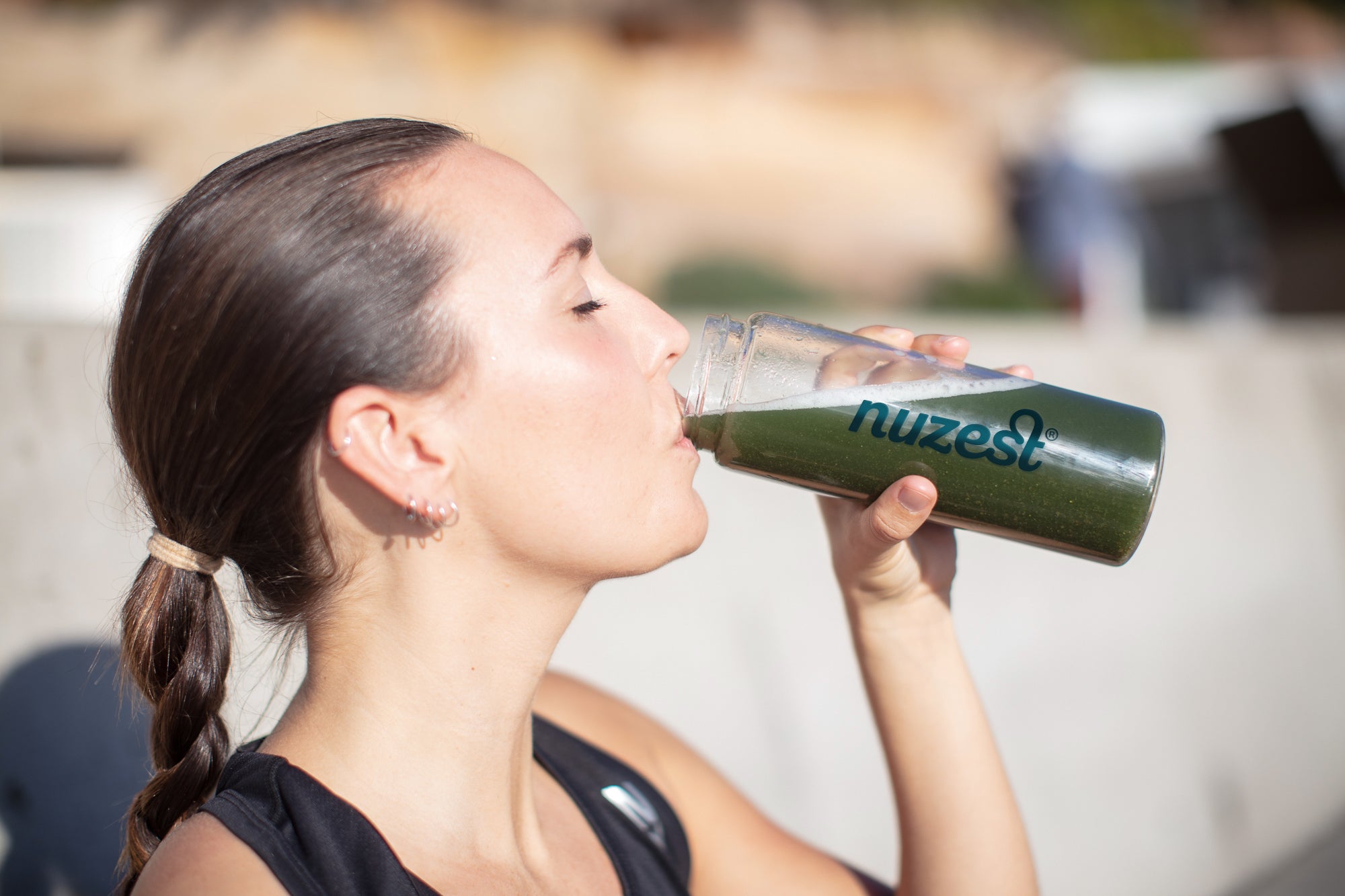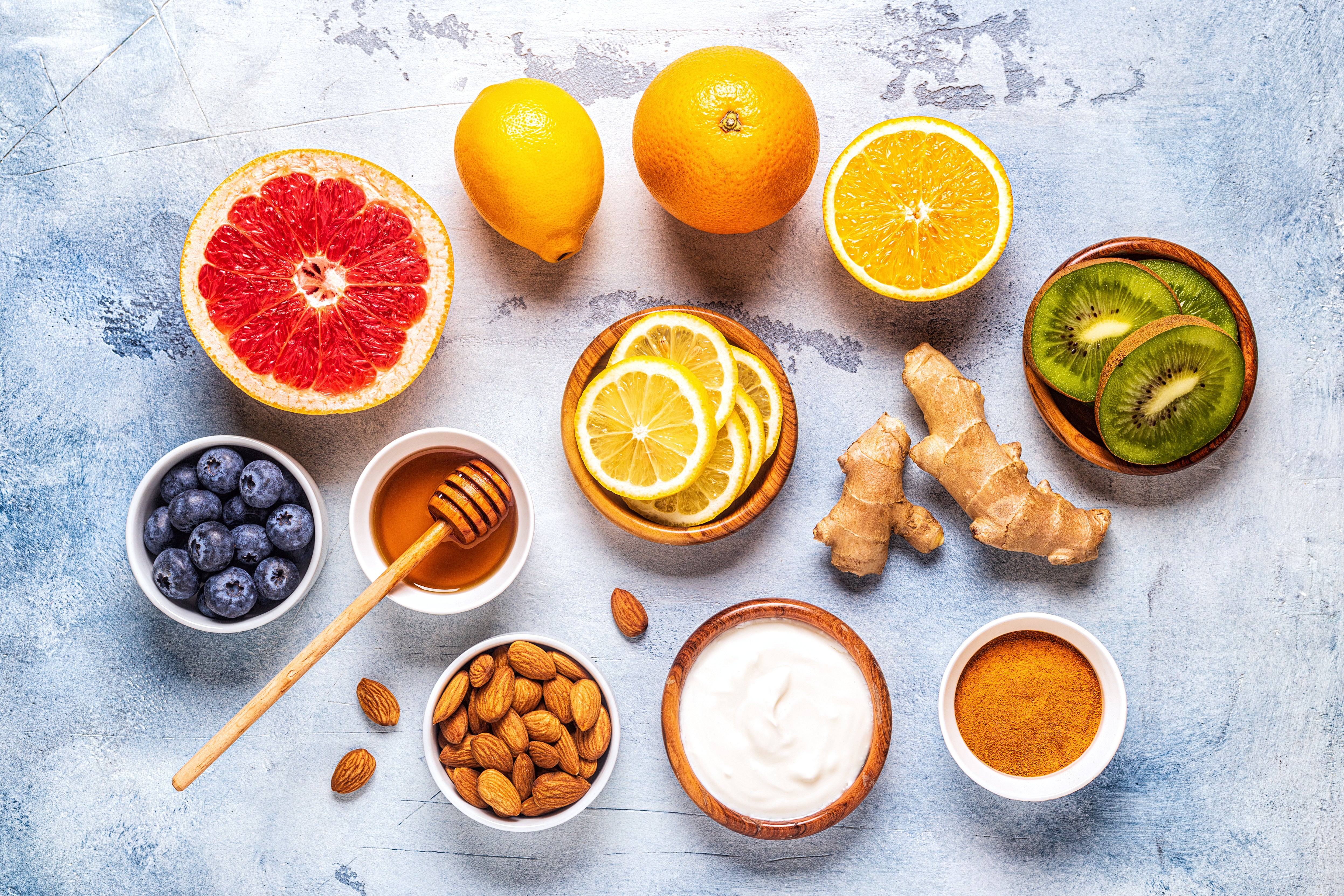Author: Megan Jones (Adv.Dip.NutMed, BHsc.NutMed)
In today's fast-paced world our diets have evolved. We now often prioritise convenience and taste over, and often to the detriment of, nutritional value.[1] In fact, the foods many of us consume in the modern-day, Western diet have dramatically shifted away from nutrient-dense whole foods, to highly processed options loaded with refined sugars, unhealthy fats, artificial flavours[2][3] The result of this is the emergence of a significant nutritional gap between the nutrients our bodies require and what our modern diets provide.
While most of us know that a balanced and varied whole food diet is arguably the best source of essential vitamins and minerals, the question remains: Why do nutrient deficiencies still occur, even in populations with abundant food supplies and the means to acquire and consume nutrient-rich foods?[4]
In this article, we take a deep dive into the drivers behind this nutritional gap – alongside ways by which to mitigate it, and strategies to ensure we are getting the right balance of vitamins, minerals and other nutrients we need to support good health. We also look at how a daily multi-nutrient formula like our Good Green Vitality, which contains 75+ nutrient-dense ingredients, may be crucial for maintaining optimal health and wellbeing in modern life.
Why do nutritional gaps exist and what can we do about them?
Persistent or periodic nutritional gaps are commonly seen in the general population.[5] These nutrient shortfalls (either inadequacies or deficiencies) may arise when people don’t consume sufficient amounts of certain foods.[6]
What’s more, there are times throughout our lifecycles, such as during pregnancy, as we age, and during times of sickness or stress, when our bodies require more nutrients than the typical diet may provide.[7]
Consequently, with this gap that is emerging between the nutrients we require and what our modern diets actually provide, our bodies may become unable to perform certain functions, leading to an increased risk of several diseases[8] or a host of health issues over time.
While inadequate nutrient intake from processed and refined foods can make the nutrient gap grow wider, further exacerbating the issue are other factors such as:
Poor soil quality: We not only encounter more environmental pollutants and toxins now more than ever before[9], but also potent fertilisers used in commercial farming have left our soils depleted of vital nutrients. Nutritional content from data as far back as 1930 shows significant decline in the following nutrients across 20 different vegetables:[10]
- Calcium
- Vitamin A
- Vitamin C
- Iron
- Potassium
Although magnesium, zinc, vitamin B and vitamin E were not researched until much later, it has been reported that these nutrients have also likely declined over time.[11]
One other study concluded that we would need to consume 8 oranges today to derive the same amount of vitamin A that our grandparents would have acquired from one!9
Recommended intakes can be confusing at times: All countries set their own specific recommended dietary intakes (RDIs), and these recommendations vary significantly depending on where in the world we reside. For this reason, nutritional labels detailing the nutrient content of foods are fundamental in ensuring we can make an informed decision about the foods we are eating - but often these can be hard to interpret and confusing.
While the age and sex of an individual are accounted for in the RDIs of a nation, what are not considered are other physical attributes such as size or weight, nor medical conditions or ethnic backgrounds, all of which are significant determinants for specific nutrient requirements of an individual.
RDIs are designed to inform us of the level of specific nutrients we need to stay alive. Good Green Vitality, however, has been carefully formulated with meaningful levels of essential vitamins and mineral. Some may exceed the RDI in some countries, but never in unsafe levels, just enough to enable your body to thrive!
Our lifestyles can further deplete nutrients: Nutrient requirements vary from day to day, from person to person. If we partake in strenuous physical activity, we will have increased energy requirements compared to those of us working in a desk job. If a person is elderly[12] or recovering from serious injury, infection or surgery, protein requirements increase, and failing to meet the recommended protein intake can increase the risk of iron, calcium or zinc deficiency.[13] And on any given day, the range of nutrients we ingest can affect the interaction and adaptation of subsequent nutrients consumed.
Vitamin C is a potent antioxidant required by the body for growth, development and repair of all tissues, and plays an important role in aiding iron absorption. It is known for strengthening the body’s natural immune defences[14] yet it can be significantly depleted in smokers or those drinking excessive amounts of alcohol.[15],[16] This is also the case for those using paracetamol, aspirin, non-steroidal anti-inflammatories like ibuprofen, or are on the oral contraceptive pill (OCP). In fact, several key nutrient depletions of concern when taking the OCP according to a report by the World Health Organisation are folic acid, vitamins B2, B6, B12, vitamin C and E and the minerals magnesium, selenium and zinc.[17]
Research reports that preventing macro- and micronutrient deficiency is crucial and can be achieved through food-based approaches and supplementation and such as our daily multinutrient Good Green Vitality, containing over 75 vitamins, minerals, antioxidants, adaptogens and more, or our Clean Lean Protein – containing 20g of plant-based protein per serve.[18]
Does it actually matter what we eat?
Research reports that nutrition plays a critical role in maintaining the health and wellbeing of individuals and is also an essential component of the healthcare delivery system of each country around the world.[19] A healthy diet helps to protect against malnutrition in all its forms, but also against noncommunicable diseases, including diabetes, heart disease, stroke and cancer.[20]
The shift in dietary patterns we have seen over time has been largely due to increased production of processed foods, rapid urbanization and changing lifestyles. The latest science tells us that we are now consuming more foods high in energy, fats, free sugars and salt/sodium, and many of us do not eat enough fruit, vegetables and other dietary fibre such as whole grains.[21]
The exact make-up of a diversified, balanced and healthy diet will vary depending on individual characteristics - eg age, gender, lifestyle and degree of physical activity- as well as cultural context, locally available foods and dietary customs. However, the basic principles of what constitutes a healthy diet – such as predominantly nutrient-dense wholefoods, rich in protein, healthy fats, antioxidants, fibre and complex carbohydrates, remain the same.[22]
Nutrition is lacking around the globe
According to the Australian Institute of Health and Welfare, most Australians have a poor diet. In fact, only around half of Australian adults eat the recommended daily serves of fruit and the vast majority are not consuming the recommended 5 to 6 servings of vegetables a day.[23]
In the US, 75% of Americans believe they eat a ‘healthy’ diet, however, contrary to this belief,
research tells us that more than 80 percent of Americans fail to eat the recommended amounts of fruits and vegetables.[24]
In the UK, the latest research reveals that most people rate their diet ‘excellent’ or ‘good’, yet 2 out of 3 adults are not eating enough fruit and vegetables, and 1 in 6 is actually excluding or restricting entire food groups.[25]
A new study carried out across 30 countries worldwide, finds 45% of people say that they are currently trying to lose weight. This figure increases to two-thirds (60%) of people in Chile who are trying to lose weight and more than 50% in Spain, Peru, Saudi Arabia, Singapore and the USA.[26] This adds another dangerous dimension to our nutrient status because caloric restriction and nutrient deficiencies often go hand-in-hand.
These deficiencies are driven even further when we choose to follow fad diets, advice from ill-informed celebrities and social media ‘influencers’, when we skip meals or additionally with the popularity of pre-made, ready and take-away meals.[27]
Bridging the nutritional gap
Here at Nuzest we know the importance of boosting our daily nutrient intake, but we also know the overwhelm that can ensue when trying to address several different deficiencies all at once. With efficacy, bioavailability and convenience as our driving forces, we have carefully formulated a nutritional blend of 75+ ingredients designed to support all 11 body systems, to help combat those deficiencies and fill the nutritional gap. Coupled with a healthy diet, Good Green Vitality is your ultimate and convenient daily nutritional insurance.
References:
- https://pubmed.ncbi.nlm.nih.gov/27374943
- https://www.ncbi.nlm.nih.gov/pmc/articles/PMC7071223/
- https://www.ncbi.nlm.nih.gov/pmc/articles/PMC4109789/
- https://www.ncbi.nlm.nih.gov/pmc/articles/PMC4109789/#B7
- https://www.ncbi.nlm.nih.gov/pmc/articles/PMC9710417/
- ncbi.nlm.nih.gov/pmc/articles/PMC4109789/
- https://www.ncbi.nlm.nih.gov/pmc/articles/PMC9710417/
- https://pubmed.ncbi.nlm.nih.gov/34649136/
- https://www.scientificamerican.com/article/soil-depletion-and-nutrition-loss/
- https://www.researchgate.net/publication/8094536
- Chernoff R. Protein and older adults. J Am Coll Nutr. 2004;23(6 Suppl):627S-630S.
- Russell RM. Setting dietary intake levels: problems and pitfalls. Novartis Found Symp. 2007;282:29-36;36-45, 212-8.
- Carr AC, Maggini S. Vitamin C and Immune Function. Nutrients. 2017.3;9(11):1211.
- Lykkesfeldt J, Christen S, Wallock LM, Chang HH, Jacob RA, Ames BN. Ascorbate is depleted by smoking and repleted by moderate supplementation: a study in male smokers and nonsmokers with matched dietary antioxidant intakes. Am J Clin Nutr. 2000;71(2):530-6.
- Sandoval C, Farías J, Zamorano M, Herrera C. Vitamin Supplements as a Nutritional Strategy against Chronic Alcohol Consumption? An Updated Review. Antioxidants (Basel). 2022;11(3):564.
- Palmery M, Saraceno A, Vaiarelli A, Carlomagno G. Oral contraceptives and changes in nutritional requirements. Eur Rev Med Pharmacol Sci. 2013 17(3): 1804-1813
- https://www.ncbi.nlm.nih.gov/pmc/articles/PMC9710417/
- https://www.ncbi.nlm.nih.gov/books/NBK580496/
- https://www.who.int/news-room/fact-sheets/detail/healthy-diet
- https://www.who.int/news-room/fact-sheets/detail/healthy-diet
- https://www.who.int/news-room/fact-sheets/detail/healthy-diet
- https://www.statista.com/topics/8926/diet-and-nutrition-in-australia/
- https://www.cdc.gov/mmwr/preview/mmwrhtml/mm6426a1.htm
- https://www.hsis.org/wp-content/uploads/2020/07/HSIS-Mind-the-Nutrient-Gaps-Report-FINAL-webfriendly.pdf
- https://www.ipsos.com/en/global-weight-and-actions
- https://www.hsis.org/wp-content/uploads/2020/07/HSIS-Mind-the-Nutrient-Gaps-Report-FINAL-webfriendly.pdf

















































